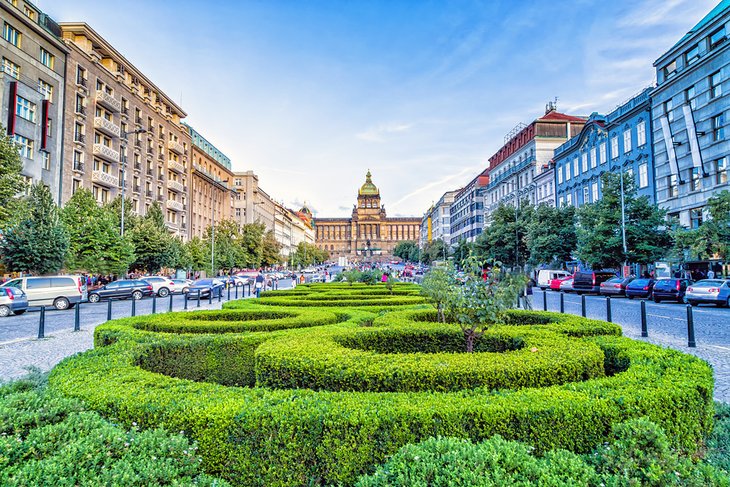Prague Castle
Located in Prague's Hradcany neighborhood, Prague Castle (Pražský hrad), once the home of Bohemia's kings, is today the official residence of the Czech Republic's President and one of the city's most visited tourist attractions.
built as a walled fortress around AD 870, the castle has changed dramatically over the years and contains examples of most of the leading architectural styles of the last millennium. Within the castle walls are a number of Prague's most popular tourist sites, including St. Vitus Cathedral, St. George's Basilica, the Powder Tower, the Old Royal Palace, and the Golden Lane.

Wencelas Square
A highlight of Prague's New Town (Nové Mesto) district–an area that grew out of the city's need to expand as it prospered–is the wonderful Wenceslas Square (Václavské námestí), home to the National Museum and numerous other architectural treasures.
Named after the patron saint of Bohemia, whose statue can be seen here, Wenceslas Square was created in the 14th century during the reign of Charles IV as a horse market and has since become one of the city's most important public spaces, still used for demonstrations and celebrations alike.

St. Vitus Cathedral
Situated within the grounds of Prague Castle, the Roman Catholic St. Vitus Cathedral (Katedrala St. Vita) is the Czech Republic's largest and most important Christian church. Seat of the Archbishop of Prague, it's also home to the tombs of numerous saints and three Bohemian kings.
Founded on the site of a Romanesque rotunda built in AD 925, the cathedral was started in 1344 and took more than 525 years to complete, resulting in a mix of modern Neo-Gothic and 14th-century Gothic styles, along with Baroque and Renaissance influences (be sure to keep an eye out for the impressive gargoyles adorning the exterior of the cathedral).
